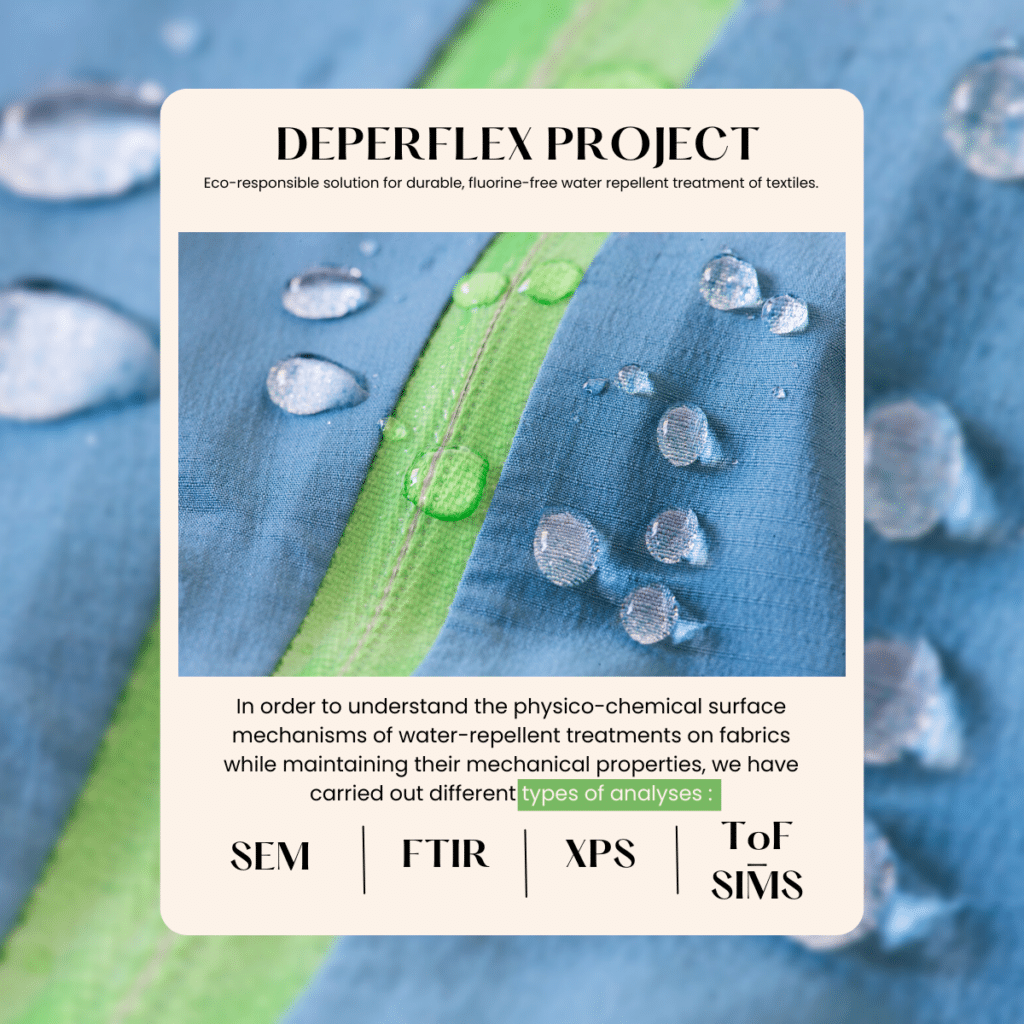Since 2017 and until last December, SERMA Technologies’ surface analysis laboratory worked on the DEPERFLEX project certified by the pole of competitiveness TECHTERA.
The objective of the project was to develop “eco-responsible” alternative solutions for water-repellent treatments without fluorine, sustainable over time.
The water repellency of a fabric is its capacity to let a liquid slide over its surface, without absorbing it. The textile does not absorb liquid and remains light and breathable. Today, water repellency is achieved through chemical treatment with fluorinated polymers containing toxic substances that have consequences for health and the environment because the substances are persistent.
Inspired by the living world, the project sought to imitate the water-repellent effect observed on lotus leaves by combining physical and chemical treatments.
The targeted applications are professional markets such as the army, the police, etc. Indeed, the objective is to develop this solution on :
- Firemen’s clothing
- Sports and outdoor clothing
- Protective clothing for the petrochemical industry
- Protective gloves and technical fabrics

For this project, SERMA Technologies carried out SEM, FTIR, XPS and ToF-SIMS analyses. These analyses enabled us to understand the physical and chemical surface mechanisms of water-repellent treatments on fabrics while ensuring that the mechanical properties of the fabrics were maintained before and after washing.
This success has enabled SERMA Technologies to develop chemical knowledge on new surface treatments that will be marketed in the coming years.
SERMA Technologies worked on DEPERFLEX’s project with SOFILETA as lead partner and 9 complementary partners including 5 companies, 3 laboratories and 1 technical center:
- SERMA Technologies
- ALPEX PROTECTION,
- MANUTECH USD,
- PROTEX SA,
- IFTH,
- Institut de Chimie et de Biochimie Moléculaires et Supramoléculaires de l’Université de Lyon,
- Laboratoire Hubert Curien de l’Université Jean Monnet Saint-Etienne,
- CNRS – Centre national de la recherche scientifique,
- Laboratoire LTDS de l’École Centrale de Lyon




